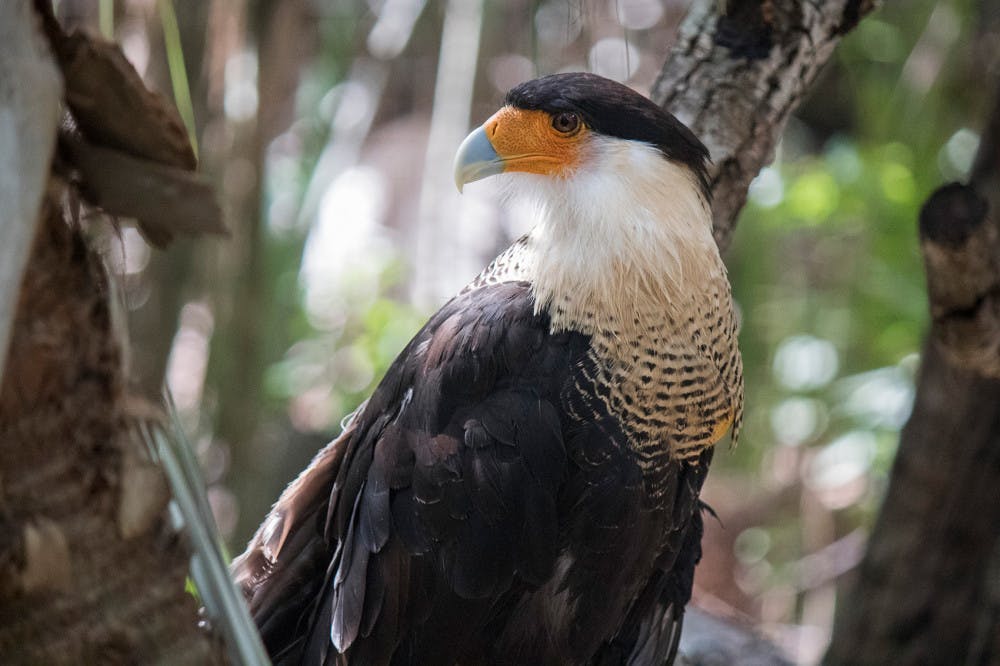A rare find for researchers led to discoveries that could change humanity’s understanding of extinction and evolution.
Florida Museum of Natural History researchers aided in the discovery of ancient DNA from a 2,500-year-old extinct Caribbean bird, Caracara creightoni. The study was published online in August. Four of the study’s seven researchers are from UF.
They group received more than $350,000 from the National Science Foundation to do research on the Bahaman caracara and other animals in the Caribbean.
Innovative technology was used by the UF researchers to study the ancient DNA. The bones are diluted in bleach, frozen and pulverized. Then, enzymes are added to the mix and a special kit is used to strengthen the DNA. They can then use this sample to determine if it is related to any other samples, said Jessica Oswald, a researcher at the museum.
The study found humans depleted the birds’ food sources and means of living when they arrived on the islands about 1000 years ago, preventing their presence in the Bahamas today, Oswald said. Ancient DNA allows researchers to better understand the history of evolution and patterns of extinction across many islands and gives an understanding of how species may respond to climate change.
“In general, animals on islands are very sensitive to any kind of disturbance,” Oswald said. “Ultimately, what we are seeing from this study is that we lost this very unique, old island species due to humans showing up on these islands.”
The techniques used to study the extinct bird are similar to techniques used to study the hutia, a Bahamian rodent close to extinction. They predict the hutia, one of the few terrestrial animals on the islands, is dispersed among many islands because of human domestication and management, showing the effect of humans on biodiversity.
“These projects are exciting and we have many more in the works, and hopefully we’ll really be able to understand communities that used to be around in the Carribbean based on all this work,” Oswald said.
Researchers retrieved the extinct bird DNA from a large sinkhole in the Bahamas. The sinkhole was discovered 2005 and excavated soon after by a professional diver. Natural chemicals, such as hydrogen sulfide and sulfuric acid, preserved the bird’s fossils by preventing oxygen to reach the bones.
Researchers at UF were only able to study the fossils as of recently because the ancient DNA facility was inactive. Such well preserved fossils are a rare find in tropical areas, said Robert Guralnick, a biologist at the museum.
“Ancient DNA tells us about genetics in the past,” Guralnick said. “I think the fact that UF and the museum have DNA facilities is so interesting.”
Guralnick helped to revitalize the ancient DNA facility and is using the fossils to shed light on ancient biodiversity and genetics, which helps in understanding evolutionary history.
“We are looking at how extinction works in the tree of life,” Guralnick said. “We lost a species that would be present today.”
The crested caracara, which has a wingspan 4 feet wide. It can be found in the Yucatan Peninsula, Florida, Cuba, Texas and parts of the Southwest U.S.

Meghan McGlone is a UF junior majoring in journalism and English, and this year she’s the City and County Commission reporter. In past years, she’s served as the University Editor, the Student Government reporter, and other positions. Her favorite past time is eating gummy worms and reading a good book.





